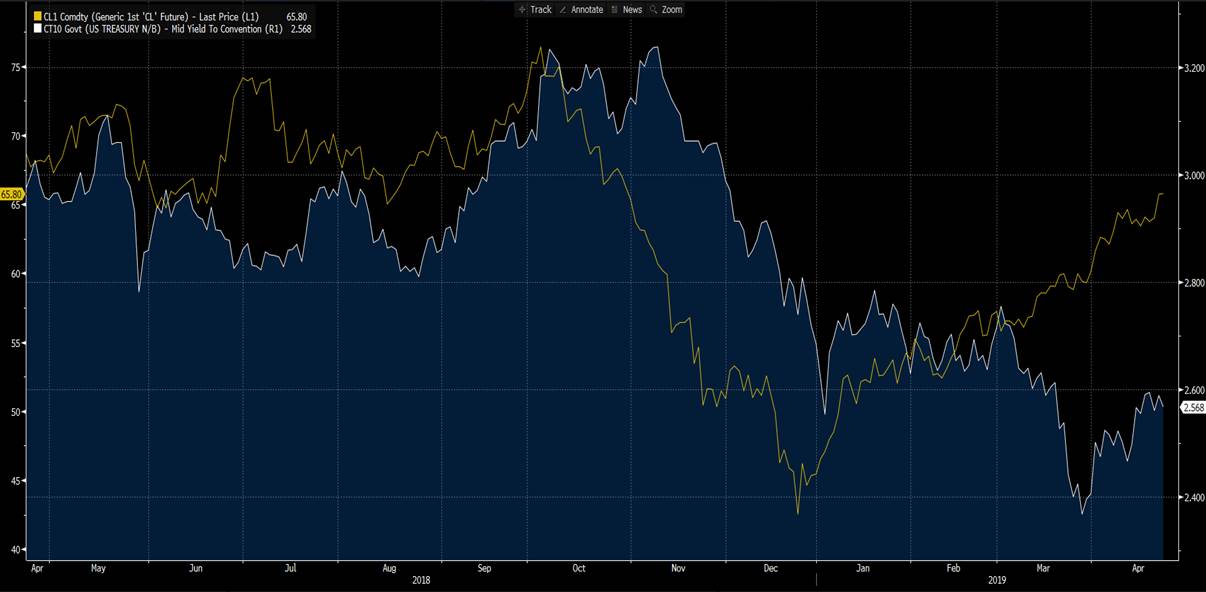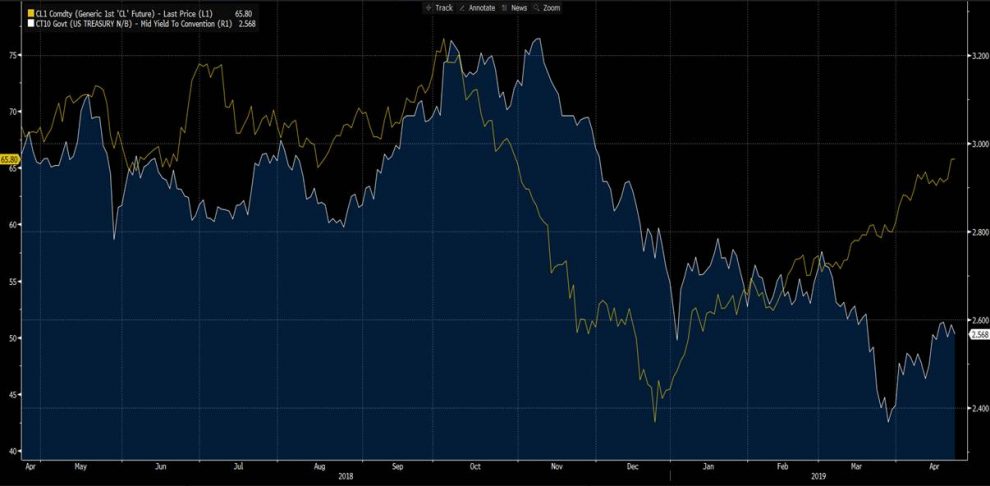What is a steady rise in crude-oil prices telling investors about the health of the global economy? That is the question some bond investors are assessing, amid a recent rally in crude futures.
Arnim Holzer, a global macro strategist at EAB Investment Group, told MarketWatch that if the climb in oil is more pegged to supply constraints amid geopolitical jitters among oil exporters, Treasury yields are likely to stay lower.
However, if a six-month high in crude is more a function of increased industrial appetite for commodities and an indication that the international economic slowdown is approaching an inflection point, it could challenge the Treasury market’s downbeat assessment about the state of global growth, which has helped keep Treasury prices high and bond yields relatively low. Bond prices and yields move in the opposite direction.
“If the crude recovery is correct, then it’s disagreeing with the dimension of the economic rollover, and it’s actually foreshadowing an economic recovery, then we expect the 10-year yield to follow as well,” Holzer said.
The 10-year Treasury note yield TMUBMUSD10Y, -0.56% finished at 2.570% on Tuesday, more than 10 basis points lower than where it started at the beginning of 2019.
The rate for the benchmark 10-year note has risen more than 20 basis points, or 0.20 percentage points, from its March low — a signal to some that worries about a global slowdown and domestic recession may be abating, after reaching a crescendo late last month.
 Bloomberg
Bloomberg
West Texas Intermediate crude CLM9, -0.56% meanwhile, has steadily climbed to more than $65 a barrel, from a recent low of $45 a barrel in late December.
A surge in the oil market can feed into rising inflation expectations, which can erode a bond’s fixed value. Higher energy prices also can indicate an uptick in global growth, which can, in turn, weigh on debt prices and push bond rates up.
The decisive jolt higher for crude prices over the past two sessions, however, has come as the Trump administration said it would end waivers allowing imports of Iranian oil. Commodity investors have been pointing to tightening supplies — along with a longstanding effort by the Organization of the Petroleum Exporting Countries and producers like Russia to curb output — as the main factors behind recent advances in oil’s value.
Read: Oil adds to multimonth high as supply uncertainty drives crude price
Still, Holzer says the climb in oil prices could be a harbinger of green shoots taking hold, in places like China, for example, where Beijing has launched a litany of fiscal-stimulus measures. If so, it is a dynamic worth watching for fixed-income investors, he warns.
However, recent data hasn’t revealed substantive increases in demand for crude thus far. Indeed, the most recent monthly report from the International Energy Agency indicated that although appetite for crude remained steady, there were signs of a sluggish uptake from countries within the Organization for Economic Cooperation and Development, or OECD, including Australia, Canada and Belgium.
“Only time will tell if our current demand forecast proves accurate, but the risks are currently to the downside,” the agency wrote.
Check out: China investment, markets recovery should boost global economy later in the year, IMF says
Providing critical information for the U.S. trading day. Subscribe to MarketWatch’s free Need to Know newsletter. Sign up here.








